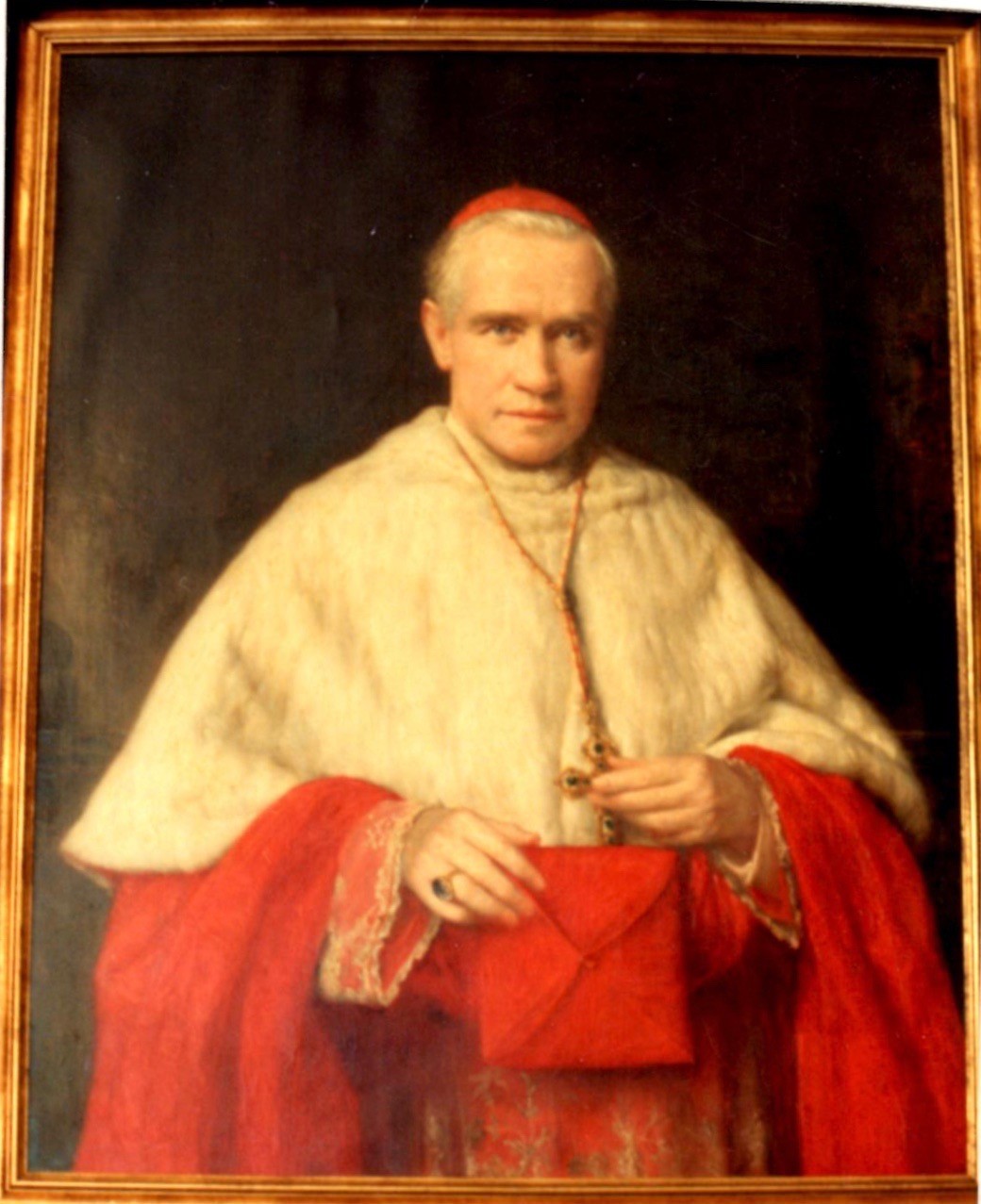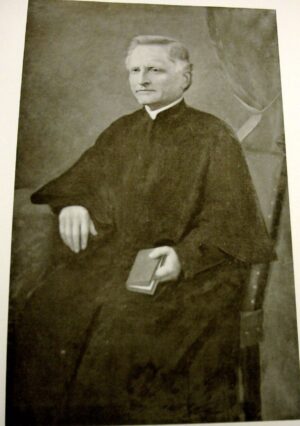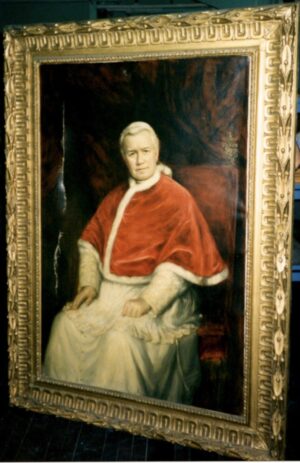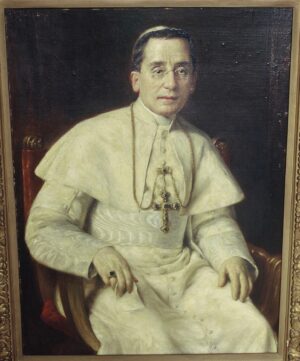Patrick Hayes was born on November 20, 1867. He graduated in 1897 from the Catholic University in Washington, and went to Rome in 1904 where in 1907 he became the domestic relate to Pope Pius X. On October 28, 1914 he was created auxiliary bishop of New York, and on November 24, 1917 became Catholic Chaplain to the U.S. Army and Navy. He was elevated to the Cardinalate on May 24, 1924. He died in New York on September 4, 1938.
Bibliography: John Bernard Kelly, Cardinal Hayes: One of Ourselves, 1940
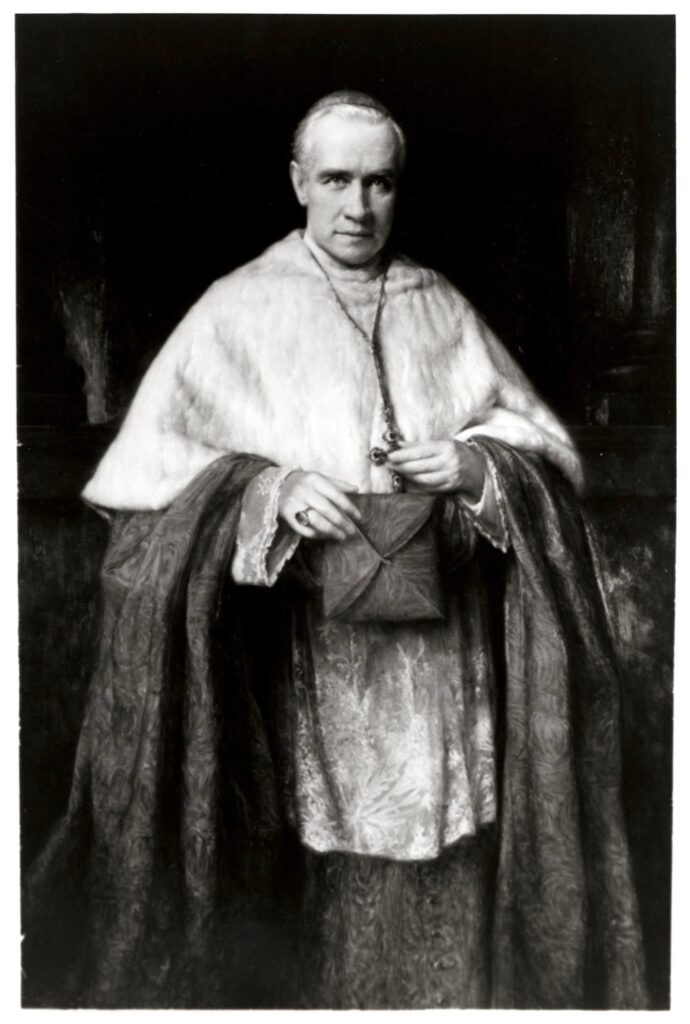
The portrait before being cut down.
Muller-Ury was received by the Cardinal on May 27, 1924 at 11.30 a.m., according to a letter in the artist’s papers, which may have been a formal request for a sitting.
The New York Evening Post, Saturday, April 11, 1925 wrote in its review ‘Portraits by Ury’:
‘The portrait of “His Eminence Cardinal Hayes” holds the center of the exhibition of portraits by A. Muller Ury at the Duveen Galleries, quite by right, for it is the best painting in the group. The color and texture of the magnificent red robe, the rich lace and the Jeweled chain and cross make a foil for the face which is almost mask-like in its impassivity if it were not for the piercing keenness of the steely gray eyes. The dignity and authority of a prince of the church are well conveyed in this somewhat florid but thoroughly impressive portrait.’
The artist himself gave the picture to the Cardinal as the following letter dated April 11, 1925 (Archdiocesan Archives, Yonkers 4, New York: Box Q – 11) attests:
‘His Eminence Cardinal Hayes
Dear Archbishop
I send herewith a cutting from the American Art News, — & ask your Eminence if I may give orders to Duveens to bring the portrait after the exhibition to your residence & have same hung by them at any place Y. E. may suggest — I would like to see the portrait where at present H. E. Cardinal Farley hangs — & I am sure there would be the ideal place for it. —–
I tried hard to get some of my catholic acquaintances to come to my studio & see the portrait & may be arrange that they would give same to Your Eminence but – I did not succeed to make them come to my studio. — Unfortunately all my real friends
are uncatholic – & I regret very much that my plan did not succeed. —
Kindest regards from
Your devoted servant, A. Muller Ury.’
On April 27, 1925 the artist wrote to Hayes again to request to come and ‘…see how the portrait looks at its proper place & how Your Eminence feel about the work in general.’ (same source: Box Q – 7) But then a Mrs. Edgar John Fellowes, of 20, Fifth Avenue, New York, the wife of a well-to-do convert to the Catholic Faith, seems to have offered to pay for the privilege of donating the picture to the Cardinal in memory of her husband (card dated November 22, 1926 in artist’s papers), which is confirmed by a letter (same source) from Cardinal Hayes himself dated June 13, 1927.
The review in American Art News, Vol XXIII, No. 27, described the picture in glowing terms saying ‘…a large portrait of Cardinal Hayes has the place of honor. Here Mr. Ury has excelled his usual efforts and produced a startlingly clear portrait that is positively regal in brilliance of vestments and in quality of laces, furs and jewels. The reds here are truly cardinal in their intensity, and the artist has captured a splendid brilliance in the sitter’s eyes that makes the likeness a speaking one.’
When the picture was cut down to fit a smaller frame is unknown, but the canvas was not folded intact over a smaller stretcher but hacked with a pair of scissors and stapled to the stretcher. The piece of original canvas with the artist’s signature and date were also stapled to the verso of the smaller stretcher.


